|
Union Pacific Weston & Athena Branches |
|
|
|
European settlers spreading out into what would become northeastern Oregon and southeastern Washington very quickly discovered the agricultural potential the area held. The amount of acreage placed into production grew in leaps and bounds, and the demand of the growing industry for transportation strongly enticed the first railroads to enter the scene. In 1875, the Walla Walla & Columbia River Railroad completed a narrow guage line running from Wallula on the Columbia River eastward to Walla Walla, primarily to transport grain harvests from the region to the river, where boats would take over for the remainder of the journey to the markets in Portland. In 1879, the WW&CR started construction on a branchline running south from Whitman, WA, towards the towns of Weston and Centerville. Topography forced the railroad to stop at Blue Mountain Station, two miles north of Weston and several miles northeast of Centerville. Henry Villard's Oregon Railway & Navigation Company purchased the WW&CR in 1879, and by 1881 the Wallula-Walla Walla mainline had been converted to standard gauge. By the end of that same year, the OR&N was planning a standard gauge line running from Walla Walla southwest to Pendleton, OR. Construction on this line started in September 1882. The grade ran south from Walla Walla to Milton, OR, where the line turned west to reach a connection with the old WW&CR branch. The grade then used the old narrow gauge tracks to Blue Mountain Station, where construction stopped. Rail laying commenced in in early December 1882, with standard gauge trains operating into Blue Mountain Station by early February 1873. A shortage of men and materials stopped all further construction at that point. The farmers of Centerville and Weston found themselves no closer to a railhead than they had been, and in mid-1883 a group of them met with Henry Villard in Pendleton. Villard turned down a construction subsidy the group offered to him and promised to build more of the planned line. Construction northward from Pendleton resumed in September, with the grade to Centerville finished and in operation by February 1884. Centerville now had rail service, though Weston did not, and a ten-mile gap remained between the two ends of what Villard intended to be a through line between Pendleton and Walla Walla. Villard's empire collapsed in 1884, after which the OR&N carried on as an independent. In late 1886, the OR&N decided to close the gap between Centerville and Blue Mountain Station, with work beginning in October. A series of spectacular loops lifted the line over the topography that stopped the WW&CR tracklayers seven years previously, with Weston finally reached by a short spur off the bottom end of one of these loops. Construction finished in January 1887, and the first through train ran between Pendleton and Walla Walla on 17 February 1887. The completed lines continued to handle vast amounts of agricultural traffic and served as UP's secondary mainline to Spokane and other points in eastern Washington. By 1960, all passenger service between Pendleton and Walla Walla had moved to buses. By the early 1980s, UP decided that the line between Pendleton and Athena- formerly Centerville- served no purpose, after which all traffic generated at Athena and Weston went north to Walla Walla and then west to Wallula. Continued low traffic levels from Athena finally forced the abandonment of the Athena to Weston trackage in 1985. Union Pacific donated the rails from that stretch to the Sumpter Valley Railroad for use in their rebuilding project. Agricultural shipments to and from Weston, dominated by a large Smith Frozen Foods plant in Weston and other shippers in Milton-Freewater and elsewhere, continued to warrant operations over the line south of Walla Walla. However, by the early 1990s UP identified this line as a potential shortline sale, and on 20 November 1992 UP leased the Wallula-Walla Walla-Weston trackage, along with some other lines in southeastern Washington, to shortline holding company Watco. Watco set up the new Blue Mountain Railroad to handle operations. |
|
|
Map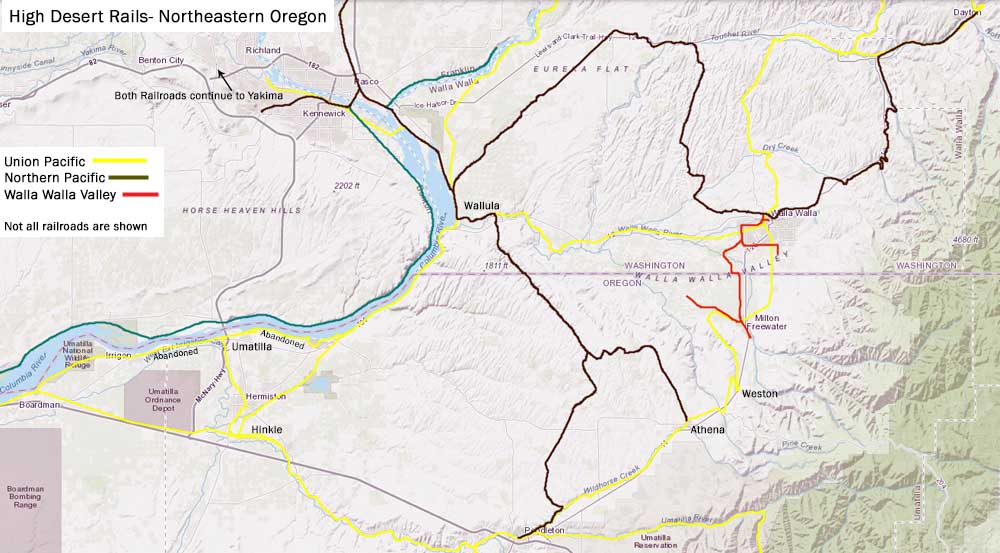 A map of the key railroads in northeastern Oregon and southeastern Washington. |
|
|
Photos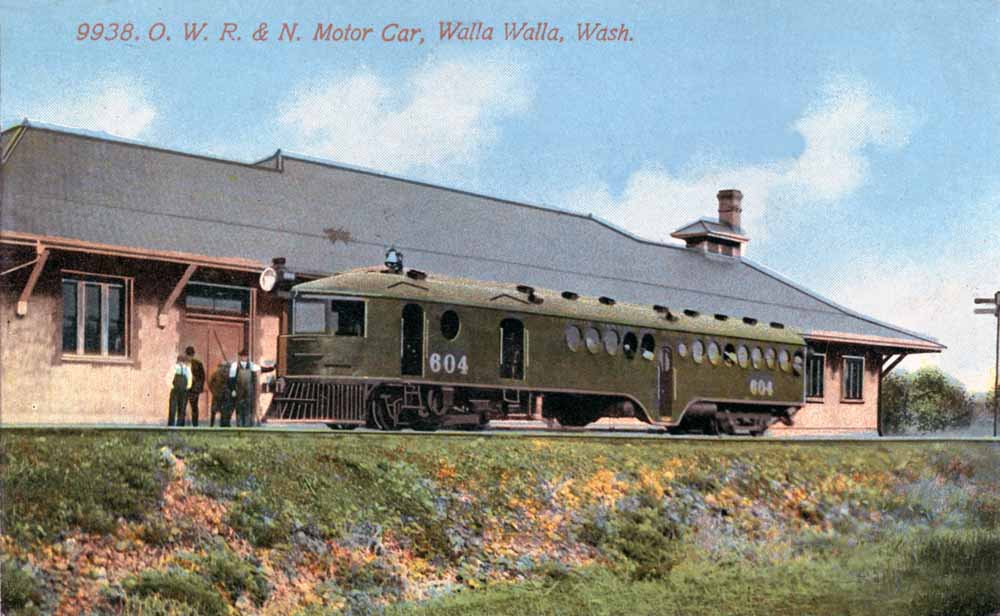
In an economy move, the O-WR&N employed a large number of McKeen and similar railcars to provide passenger service on a lot of the low density branchlines
and secondary mainlines, such as this car seen in Walla Walla. Jeff Moore collection. |
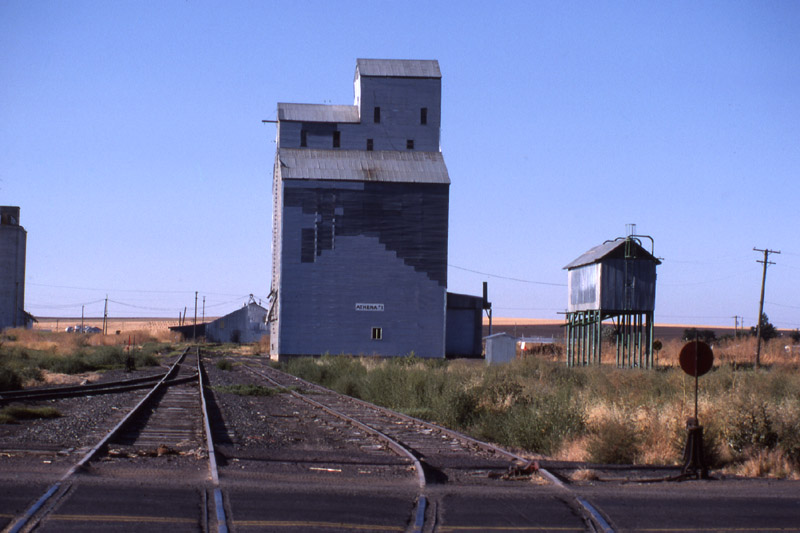 Grain elevators in Athena. John Henderson photo, Jeff Moore collection. |
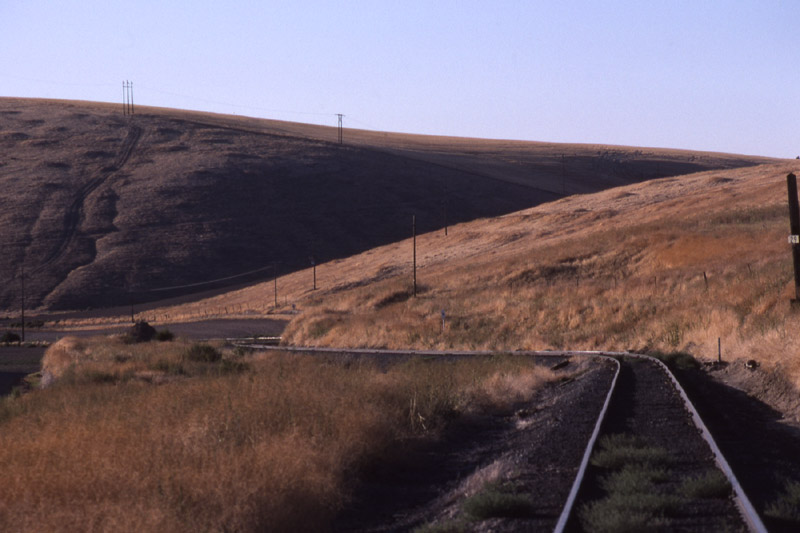 Along the Athena branch. John Henderson photo, Jeff Moore collection. |
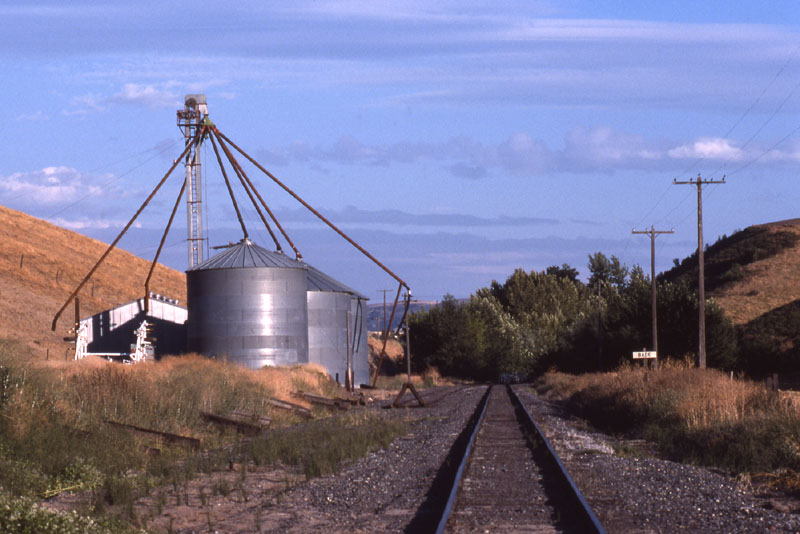 Along the Athena branch. John Henderson photo, Jeff Moore collection. |
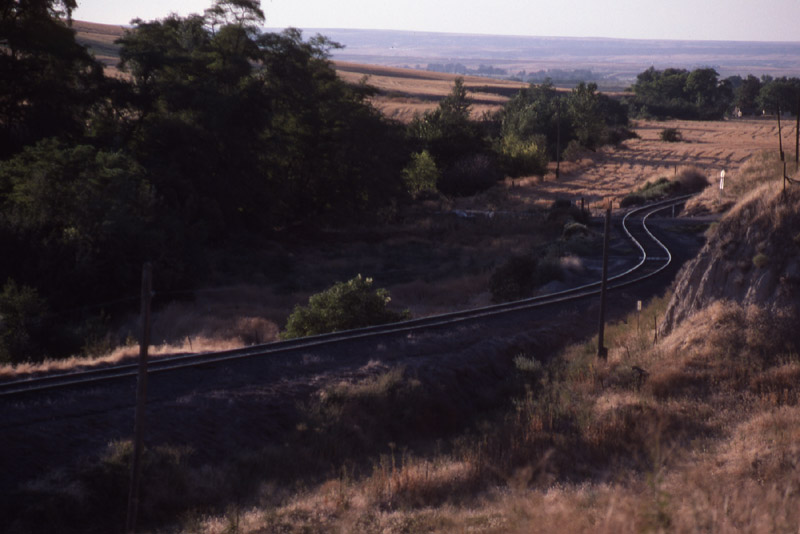 Along the Athena. John Henderson photo, Jeff Moore collection. |
 The UP depot in Milton-Freewater, OR. John Henderson photo, Jeff Moore collection. |
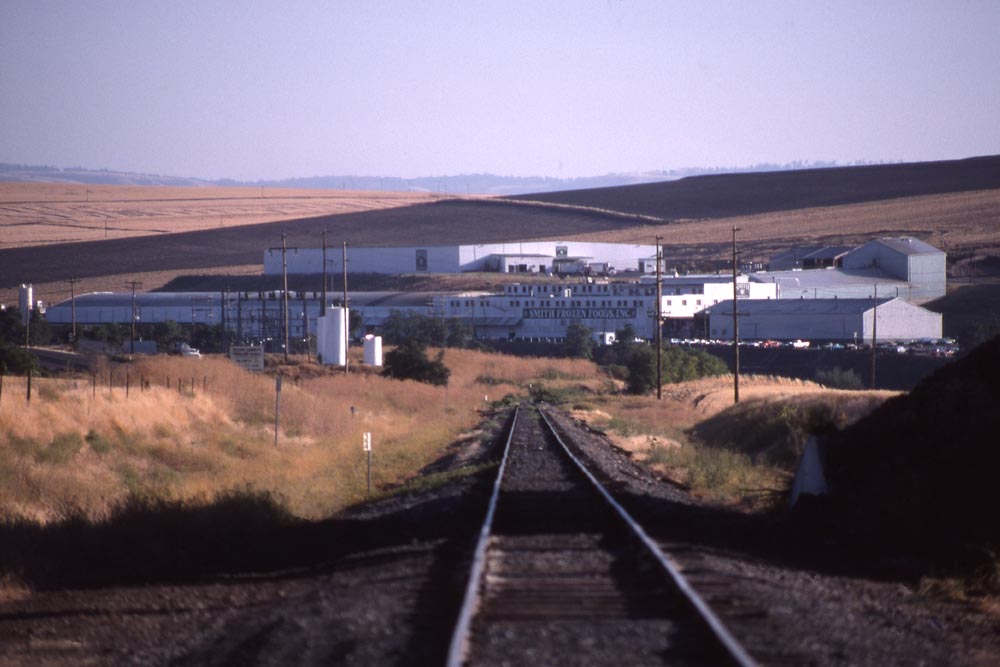 Smith Frozen Foods in Weston. John Henderson photo, Jeff Moore collection. |
|
|